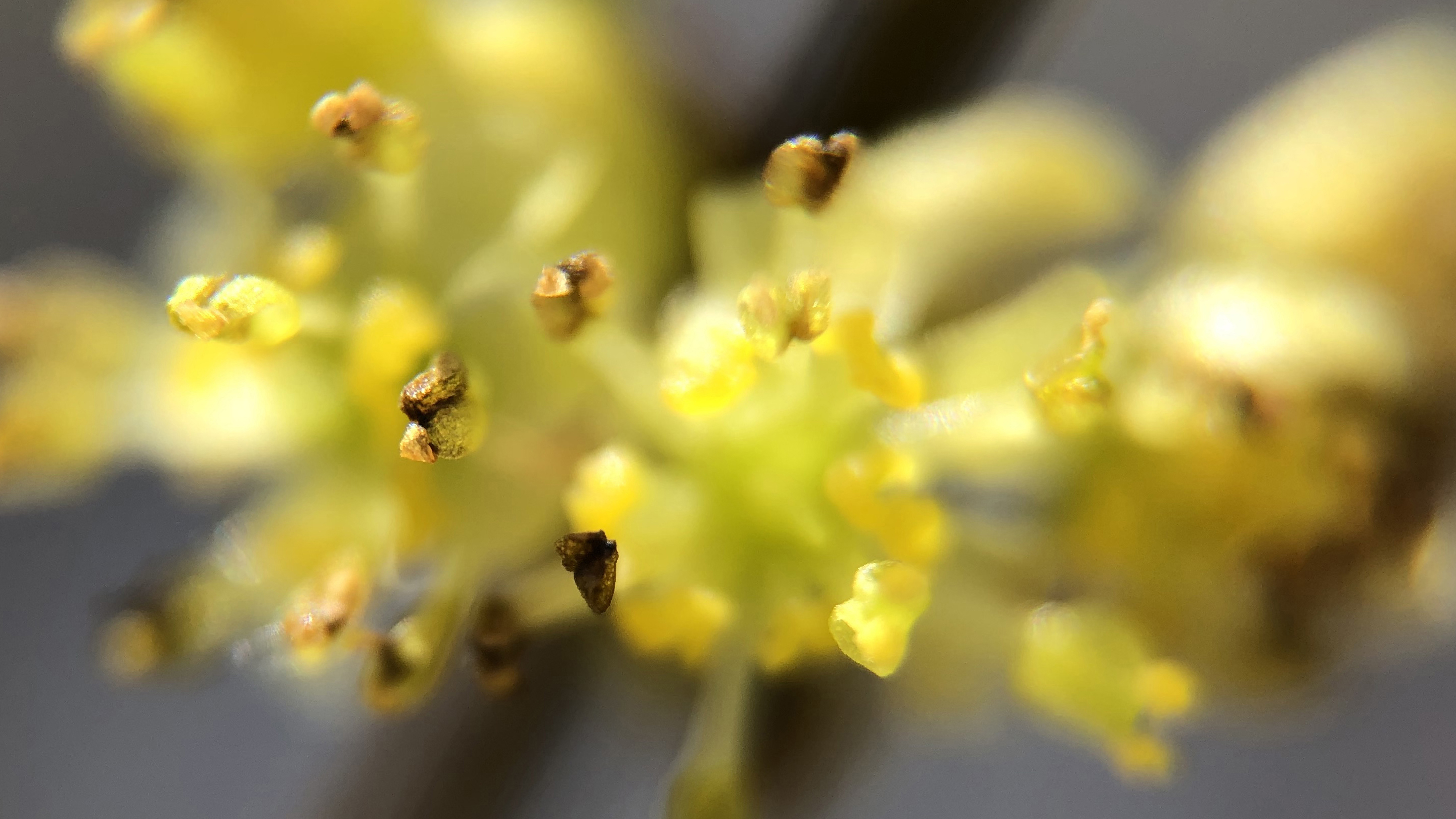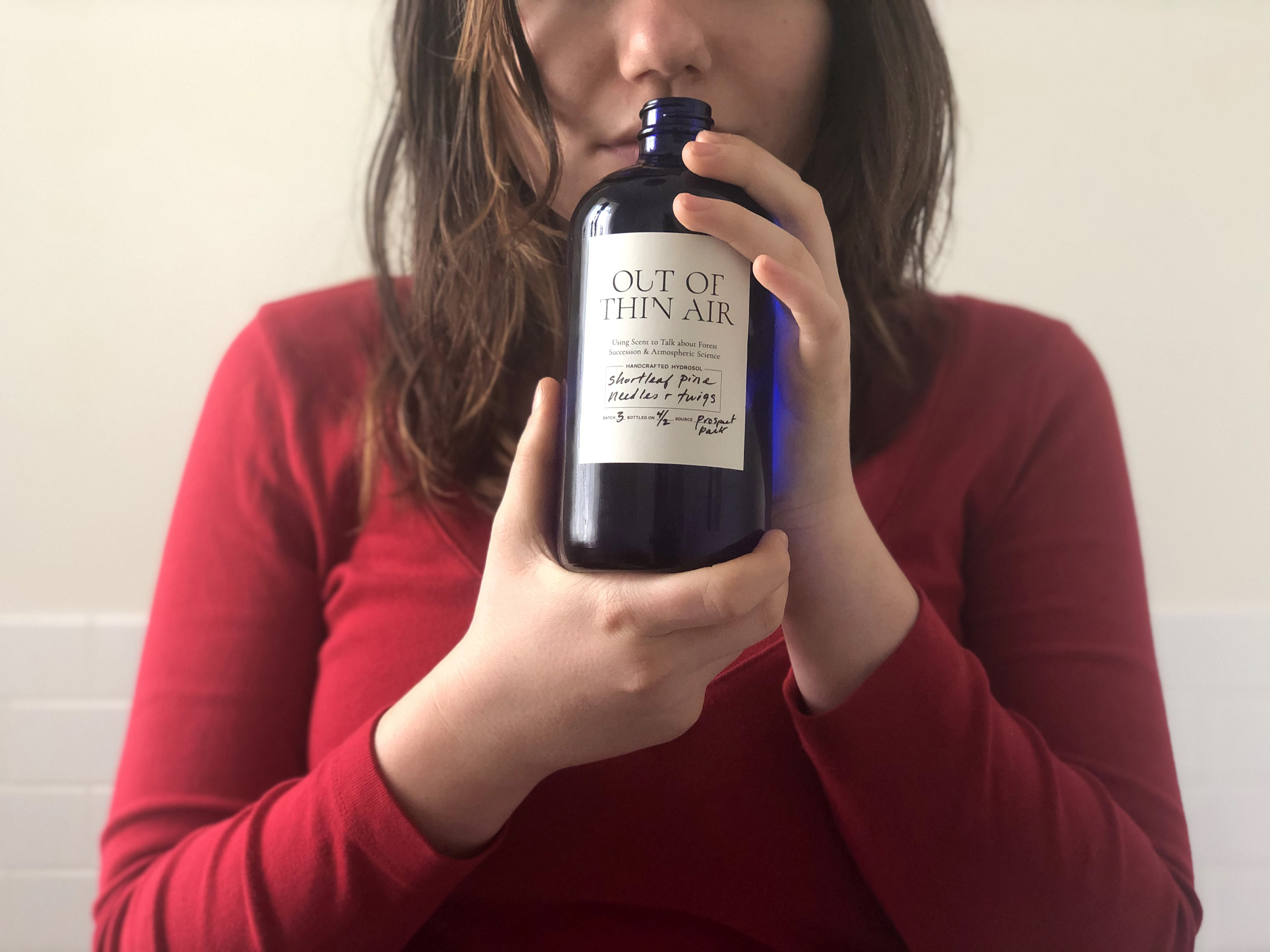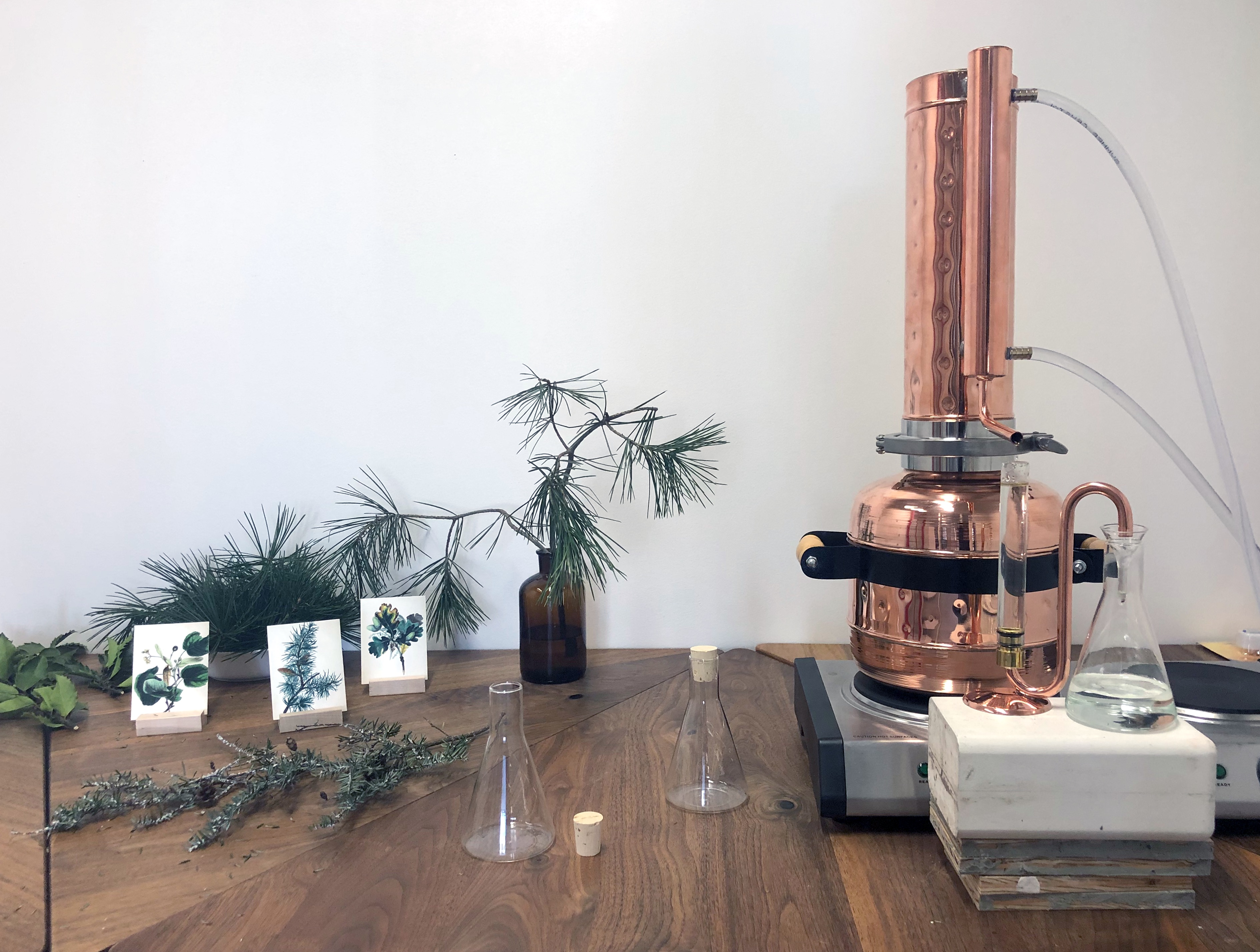




Our olfactory sense triggers memories—and by association, one might say that smell is linked to time in human perception. This experimental research is a sensory teaching tool to talk about the delicate complexity of our forests in a warming climate. It employs ethnobotanical processes, such as distillation, tinctures, and smoke, to create scent combinations that map forest succession in Prospect Park, Brooklyn—from pre-European settlement to future scenarios. Forests pre-logging smelled different from today's forests, and that smell is ever-changing as forest succession and climate change march on.
Outcomes also include a video essay, botanical drawings, process documentation, and microscopic footage. This project was developed in conversation with faculty at the University of Michigan Biological Station. Funding provided by a Pratt Institute Research Seed Grant and presented as part of the Pratt Institute Research Open House.
Learn more on the website thinair.site.
Watch a video essay that explains the science behind the project.